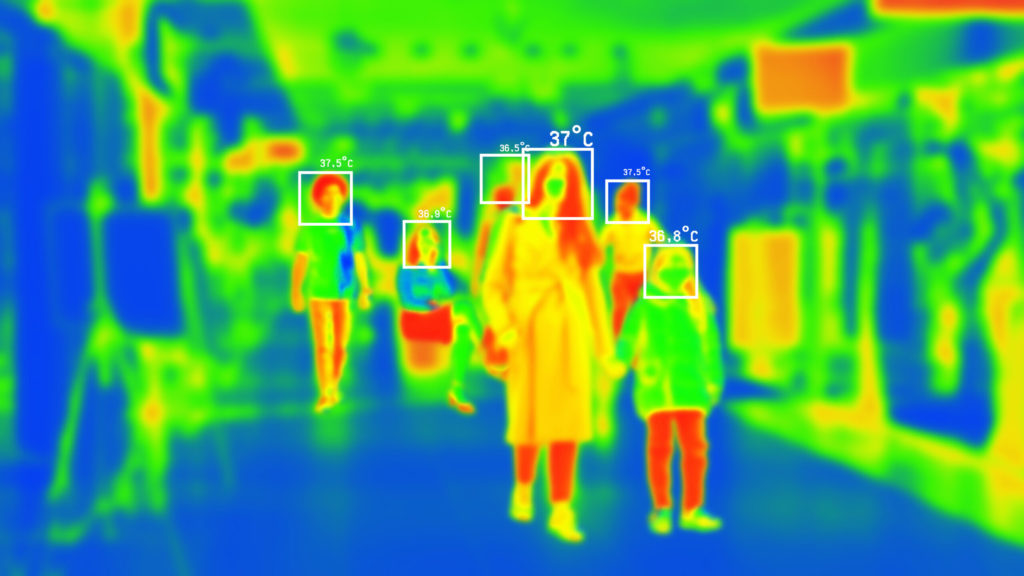This market research report was originally published at Yole Group’s website. It is reprinted here with the permission of Yole Group.
After a blip in the market due to the COVID-19 pandemic, the market is now back to normal and will be driven by traditional applications to a value of $9.2 billion in 2027.
OUTLINE
-
The overall thermal imaging market is expected to reach US$8.7 billion in 2027. In parallel, the overall thermal detector market will be close to US$598 million in the same year.
-
The general technical trend is a move towards pixel pitch reduction in microbolometers.
-
Teledyne FLIR retains its historical leadership in thermal imaging but is slowing down in 2022.
-
The Chinese industry holds its position with a 38% market share by volume in 2022 and is animated by notable advances.
-
The U.S. market is increasingly supplied by local players (Teledyne FLIR, and Seek Thermal), while China prefers Hikvision.
The Chinese ecosystem is consolidating its position. Therefore, from the Chinese side, the thermal imager manufacturers are clearly consolidating their positions in 2022. Indeed, after ramping their shipments in 2020 for fever detection systems, they have managed to maintain their position in 2022 and ship nearly 40% of thermal imagers globally. Among them, Hikvision and InfiRay are the two leaders. Both companies have significantly improved the performance of their products and adapted their portfolio to be stronger in classical thermal applications, such as surveillance for Hikvision and the consumer market for InfiRay.

In this dynamic context, Yole Intelligence has developed a dedicated report to provide market trends and data on key thermal detectors (thermopiles, pyroelectrics) and imagers (microbolometers), including metrics and dynamics. In its new Thermal Imaging and Sensing 2022 report, the company, part of Yole Group, provides key technical insights into future technology trends and challenges and delivers an in-depth understanding of the thermal imaging value chain, infrastructure, and players. In addition, this study presents an in-depth analysis of thermal detectors and imagers for defense, automotive, industrial, and consumer applications.
“In 2021, the thermal imaging and sensing market returned to traditional applications as the demand to test body temperature for fever detection collapsed. As a result, the thermal detector market is expected to decrease from US$460 million in 2021 to US$439 million in 2022”.
Axel Clouet, Ph.D.
Technology and Market Analyst, Imaging and Display, Yole Intelligence (part of Yole Group)

The thermal imaging market is similarly expected to shrink from US$6.2 billion in 2021 to US$5.9 billion in 2022. The demand for classical applications is still solid, but the global component shortage results in delays for critical components necessary for manufacturing thermal cameras. If the situation returns to normal in 2023, the overall imaging & sensing market is expected to grow from US$6.6 billion in 2021 to US$9.2 billion in 2027, with a CAGR21-27 of 6%.
Thermal detectors are becoming more digital, with many functionalities added to the sensor. In addition, the pixel pitch of thermopile detectors is still decreasing and may compete directly with thermal imagers, mainly for smart building applications.
“In thermal imagers, there is still a general trend for pixel pitch reduction, with R&D targets of 10µm to 8µm, whereas most commercial products have a 17µm or 12µm pitch.”
Dalil Oussalah, Ph.D.
Technology and Market Analyst, Sensing and Actuating, Yole Intelligence

Small pixel pitches could help reduce the size of chips and so their price while maintaining sufficient resolution. There is also a growing interest in thermal and visible data fusion for commercial applications, like automotive…
Yole Intelligence’s imaging team invites you to follow the thermal imaging and sensing industry and the evolution of the technology on www.yolegroup.com.
Stay tuned!


